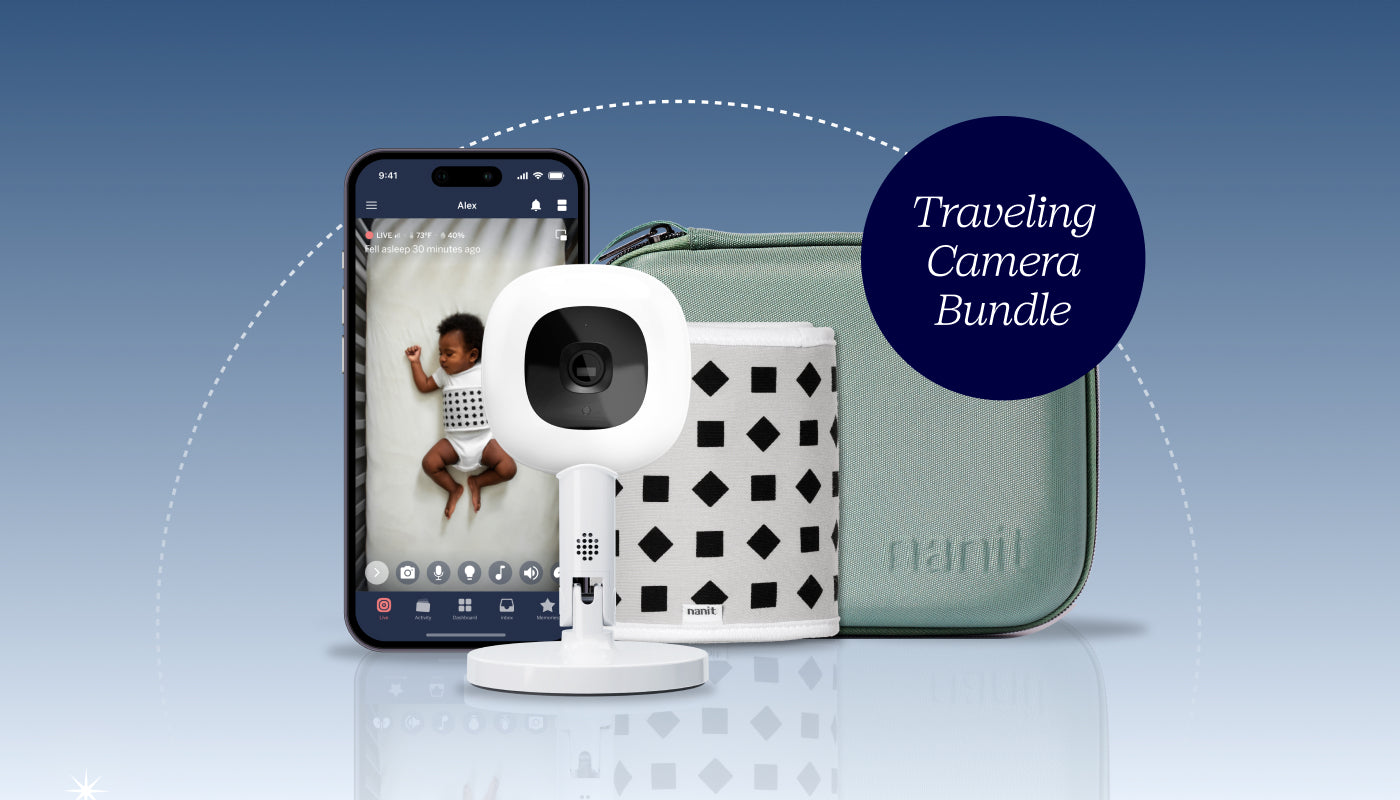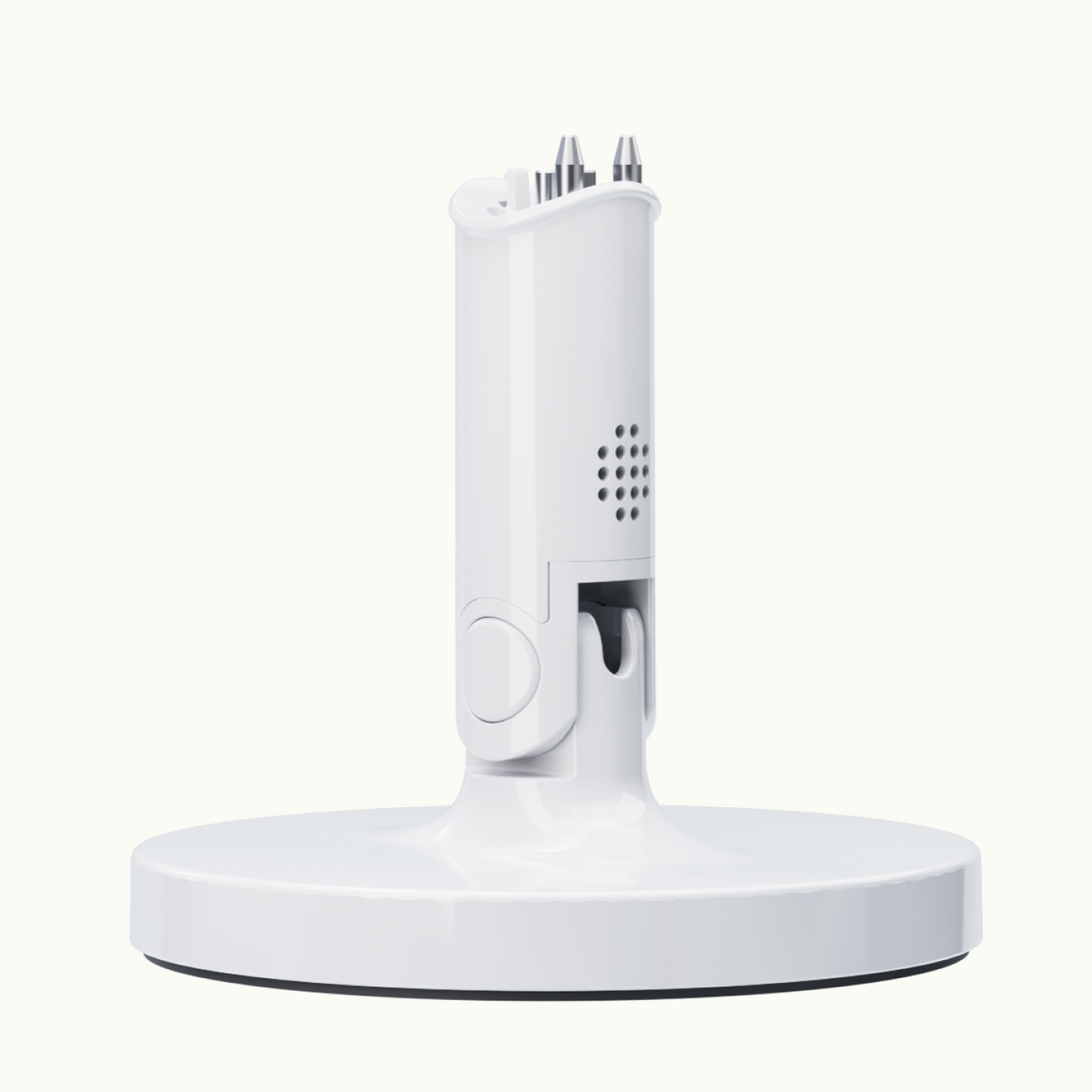The American Academy of Pediatrics recommends that babies sleep in their parents’ bedroom – “on a separate surface, such as a crib or bassinet, and never on a couch, armchair or soft surface” – for the first 6 months of life, and ideally a year. In fact, in a statement released last October, the AAP said that room-sharing reduces the risk of sudden infant death syndrome (SIDS) by up to 50%.
That said, room-sharing can often be a big challenge for parents. For one thing, you might not have enough space. Not to mention, teaching independent sleep habits with your baby right next to your bed can be more than a little tricky. And, you’re already sleep-deprived – bringing in a noisy (yet completely adorable!) new roommate can make getting sleep even more difficult.
So if you do decide to room-share, what can you do to make sure both you and baby get those zzz’s? Here are some practical tips and tricks:
- Create a separate baby sleep zone
First thing’s first, section off a special sleep zone for baby, one that’s completely separate from your sleep area. You can use a curtain or room divider to create a sort of mock nursery for your little one. Not only will it help your baby get used to sleeping in their own environment, but it can make teaching those independent sleep habits easier.
- Move the crib away from your bed
On the one hand, having your baby in your room can make feeding in the middle of the night a lot easier. On the other hand, as the Baby Sleep Site points out, with baby so close to your bed you might find yourself checking on them every two minutes. And it’s not exactly helpful if you’re sleep training. That’s why the Baby Sleep Site recommends moving baby away from your bed: “If your baby’s sleeping area is close to your bed, move it away. Having some distance between you and your baby will help in the sleep training process, especially if you use some kind of divider so that your baby cannot see you.”
- Keep things dark (but don’t forget a nightlight!)
Darkness is that magic ingredient that cues sleep in both infants and adults. So keeping your room extra dark with blackout shades can help everyone get a good night’s sleep. But what do you do if you have to get up to check on the baby or use the bathroom in the middle of the night? Try lining the path to the bathroom with a nightlight here and there that you can turn on as you go, or use the flashlight on your phone. Luckily, Nanit’s camera comes equipped with a built-in LED nightlight that faces towards the ceiling, not the crib, so you can check on baby without waking everyone up. Best of all, you can control Nanit’s nightlight directly from our app, so you won’t stub your big toe on the way to the crib.
- Bring on the white noise
White noise is always a good idea. Not only does it drown out bothersome sounds so your baby can get some beauty rest, but it can come in handy for you too (let’s not forget, babies can be noisy sleepers!).
- Invest in a good rug
A dark, quiet room is a must for sleep. So in addition to blackout shades and white noise, you might want to invest in a good rug. As Today’s Parent says, “A rug can divide the room – allowing parents to keep their tranquil setting while acting as a divider from baby. Plus, a rug can absorb sounds, making it safe for tiptoeing (literally) around baby’s sleep schedule.”
- Tone down distractions
The bedroom should be a sleep haven, a place where you can really wind down. A décor with soothing colors and design touches can really help set the scene for sleep. That’s why experts often recommend neutral or pastel tones in the nursery, as well as staying away from overly stimulating elements like mobiles. If you’re room-sharing, you might want to think about about removing any photos, wall art or bold colors that might distract baby while they’re trying to sleep. It might even help you sleep better too!
- Don’t forget healthy sleep habits
Even if you’re sharing a room with baby, you can still make healthy sleep habits a priority. A regular bedtime routine for baby is always a good idea, as is working on building positive sleep associations and enforcing a consistent daytime feeding and sleep schedule. All of that can help your baby sleep better and make sharing a room a little bit easier too.
Want more sleep tips? Check out more advice for creating a safe sleep environment for baby here.





